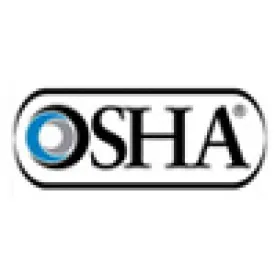OSHA first announced its proposed rule on Occupational Exposure to Crystalline Silica in August 2013 and concluded public hearings on the proposed rule in April 2014. In spite of this ongoing intense rulemaking on occupational exposure to crystalline silica, OSHA and NIOSH published a Hazard Alert on Worker Exposure to Crystalline Silica during Countertop Manufacturing, Finishing and Installation last week. This marks the first Hazard Alert on silica exposure since OSHA issued the alert for Worker Exposure to Silica during Hydraulic Fracturing in June 2012.
Interestingly, this recent Hazard Alert is limited to the dangers associated with occupational exposure to crystalline silica during the manufacture, finishing and installation of countertop materials. In the press release announcing the Hazard Alert, OSHA and NIOSH note that it is in response to 46 cases of silicosis among workers in Spain and 25 cases in Israel, 10 of whom required lung transplants, that prompted them to bring to the attention the risks posed by exposure to crystalline silica in this sector of the construction industry.
In the case of the Spanish workers who developed silicosis as a result of occupational exposure to crystalline silica, all of the diagnosed cases came from the province of Cadiz and the affected workers were all employees or owners from 12 small family businesses. After investigation, it appears that dust exposures were not systematically controlled by using any engineering controls or safe work practices, such as no use of water spraying systems during cutting and grinding, poor ventilation while manufacturing and finishing countertops, lack of ventilation installing countertops, no periodical measurements of dust levels, very limited access to personal protective equipment (PPE), and extended exposures to crystalline silica exposure during 10 hour work days.
Although OSHA’s rule on Occupational Exposure to Crystalline Silica is still in the proposed stage, employers in the U.S. have a duty to provide safe and healthful workplaces for their employees under the Occupational Safety and Health Act of 1970 and protect employees from exposures above the permissible exposure limit (PEL), roughly 100 mg/m3. The Hazard Alert appears aimed to remind employers of their responsibilities under the Act in this industry and to repackage the recommendations and potential requirements from the proposed rule.
In recent years construction companies have offered more luxurious countertops and the demand from consumers has risen. Countertops are often made from either natural stone (e.g., granite) or manufactured stone (e.g., quartz). Manufactured stone has gained in popularity because it offers a wide range of colors and surface finishes. The amount of silica present in countertops depends on the type of stone but engineered stone may contain over 90% silica. The presence of silica is not in itself hazardous but it becomes hazardous to health when it is disturbed and fine dust particles are released into the air and then breathed into the lungs of workers. Workers whose occupation involves cutting, grinding, chipping, sanding, drilling and polishing natural and manufactured stone products can have some of the greatest exposures to respirable crystalline silica. Workers may also be exposed to respirable silica when opening bags of ground quartz, moving or mixing bulk raw materials, cleaning and scraping mixers, or cleaning dust collector bag houses. The production of countertops can involve every one of these tasks.
The Hazard Alert identifies the need to use engineering controls, safe work practices, PPE, and worker training to protect workers from overexposure to crystalline silica during the countertop production-to-installation process. These measures, which are virtually identical to those suggested in the proposed rule include: monitoring the air to determine worker exposures to silica, controlling dust exposures using engineering controls (e.g., water spraying systems and appropriate local exhaust ventilation systems), implementing safe work practices (e.g., wet sweeping or using HEP-filtered vacuums, prewashing stone slabs prior to cutting, grinding, etc., cleaning clothes before removing), identifying and isolating dust-generating operations (e.g., physically fencing off the work area, using enclosures), performing as much work as possible under controlled conditions rather than at the point of installation, and providing recommended respiratory protection if engineering and safe work practices alone are not adequate (e.g., NIOSH-approved N95 respirator or greater). Additionally, employers are required under OSHA’s Hazard Communication standard to prepare and implement a written hazard communication program and educate employees on hazardous materials used in the workplace such as silica. OSHA also recommends employers to consider medical monitoring for workers who are exposed to silica at or above one-half the PEL.




 />i
/>i

